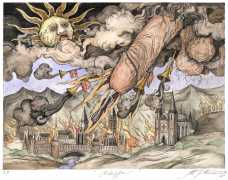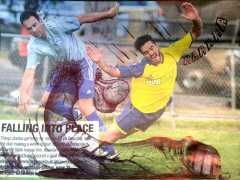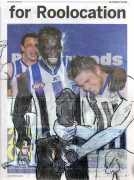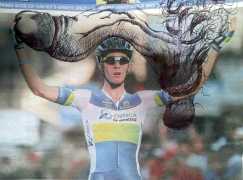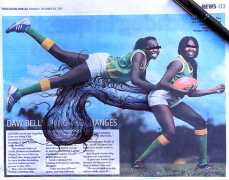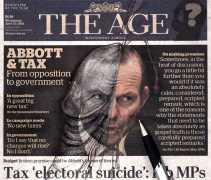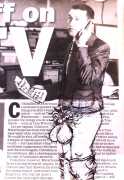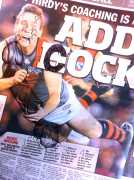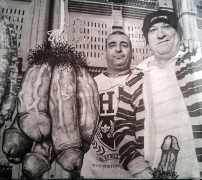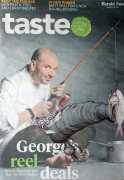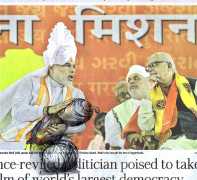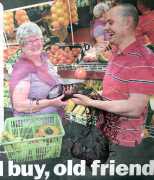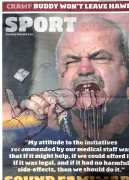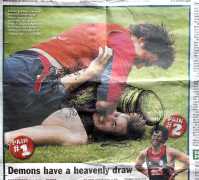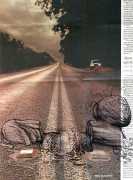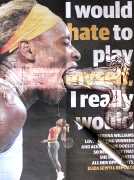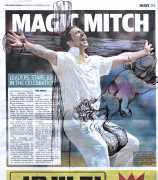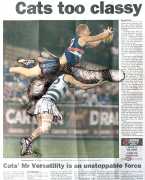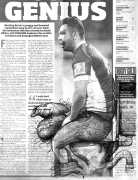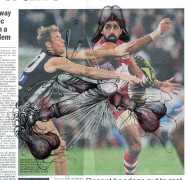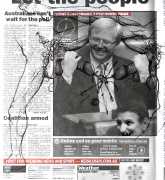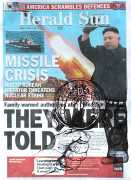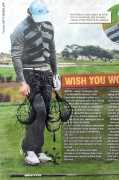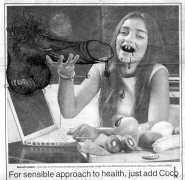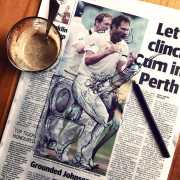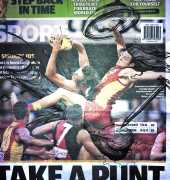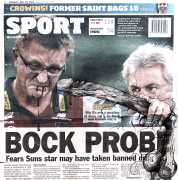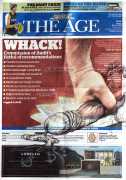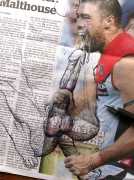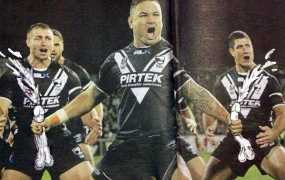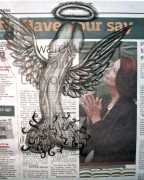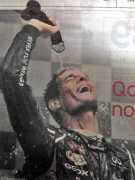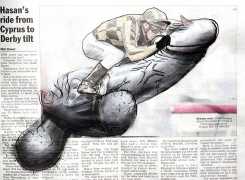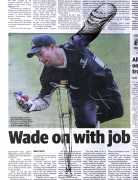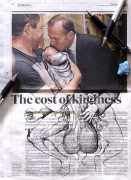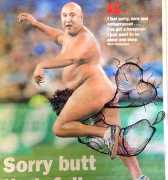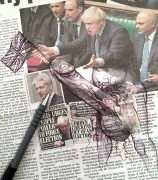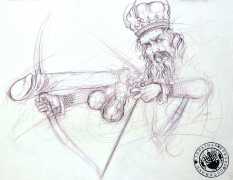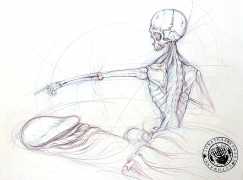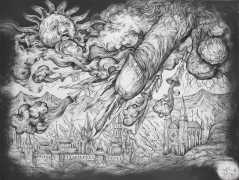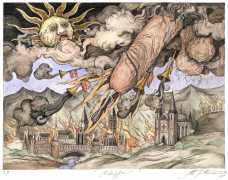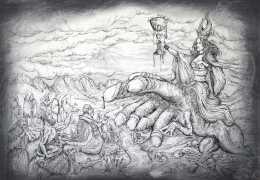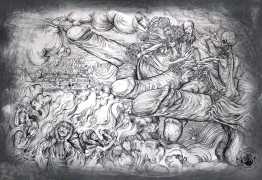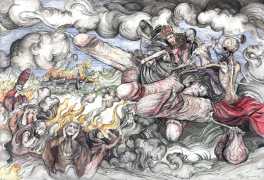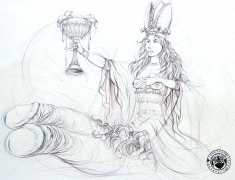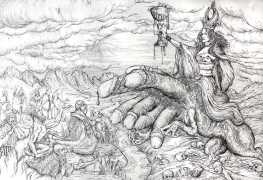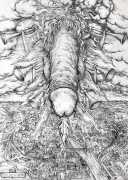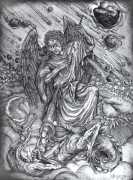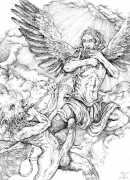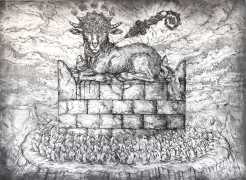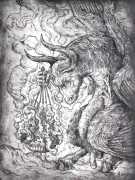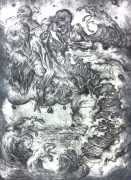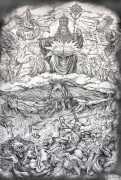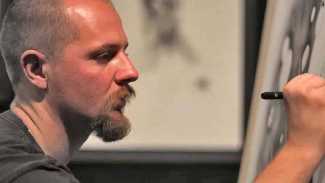 The talented, versatile, and often controversial Australian artist Jonathan Edward Guthmann grew up in Sydney, moving in his early twenties to Melbourne to study first theology, then linguistics, though art was an ever-present passion.
The talented, versatile, and often controversial Australian artist Jonathan Edward Guthmann grew up in Sydney, moving in his early twenties to Melbourne to study first theology, then linguistics, though art was an ever-present passion.
He first gained attention, some might say notoriety, for his meticulous satirical drawings of phalluses on newspaper photographs, published on his Tumblr account. In recent years Jonathan’s preferred technique has been intaglio printmaking, a traditional method of manual printing. He also works with pigmented inks, charcoal, graphite, conté and oil paints, often mixing these mediums with a unique approach to create distinctive works. Jonathan‘s academic background in theology and his passion about this topic greatly influences his creative life – his work is saturated with existential themes, deeply symbolic motifs, allegories and metaphors. His finely-crafted paintings and illustrations often feature a contemporary take on ancient esoteric, metaphysical, mythical and religious Judeo-Christian iconography, examining the perennial questions behind conventional religion.
In 2017 Corinne Beinart of the Beinart Gallery in Melbourne, which exhibits and sells much of Jonathan Guthmann’s work, interviewed the artist – here are some of his replies.
As well as being an accomplished artist, you also have a background in theology. Which interest came first?
That’s a difficult one to answer because while I’m not religious in the commonly understood sense, I grew up in an environment where there was a lot of religion around me. Some of my earliest memories are of very conservative preachers standing behind their podiums talking about the soon-to-come apocalypse, and in my later teenage years I started taking my first serious look at the world religions. Although I had long been fascinated by mythology and religious belief, it wasn’t until my later twenties, when I moved to Melbourne, that I started formally studying theology. As for the art side of things, I’ve been drawing since a very early age, I would have been about six when I started. Both have been significant factors in my life from very early on, and they’ve ‘fed into and informed one another.
Your work often explores themes around death and mythical-religious symbols. Does this come from your academic background, or is it more of a personal exploration?
It comes from both, although I was doing fairly dark work that explored death in the symbolic sense well before I started my formal study, and creating a lot of work heavily influenced by esoteric traditions like Rosicrucianism, Freemasonry and other mystic traditions. However I certainly can’t say that my studies haven’t provided inspiration for a lot of my work. One of my largest projects to date was the creation of series of illustrations for the Book of Revelation, which I did while I was translating the book from the original Greek as part of my degree.
As well as exploring some fairly dark themes in your etchings, you’re also known for your more humorous artistic endeavours, most notably Drawing Dicks on the Herald Sun. How do you see these two aspects of your creative self? And do you believe it is important to find humour in the darkness?
To live a life without a sense of humour would make for a pretty dull experience, and probably also one that’s pretty depressing given the way a lot of the world is these days. Usually I would keep my ‘serious’ work quite separate from the humorous stuff, although my recent series on the Book of Revelation is replete with giant phalluses, and they’re mostly instruments of wrath. It’s a funny thing to take something so serious as the cataclysmic end of the world and saturate it with grotesque genitalia. It was really quite satisfying.
Where to from here? Do you have any new projects or ideas you’d like to share?
Where to from here? There are a few things floating round my head. Revisiting the apocalyptic themes is on the cards at some point. I’ve also been wanting to doing a series of eerie tree-based landscapes for a while, and I’m considering playing with some dark interpretations of traditional fairy tales like those of the Brothers Grimm.
Jonathan Guttmann’s Instagram page can be found here, and his Tumblr account here.
We would like to thank our Russian friend and contributor Yuri for introducing us to the work of this artist and supplying many of the images.

